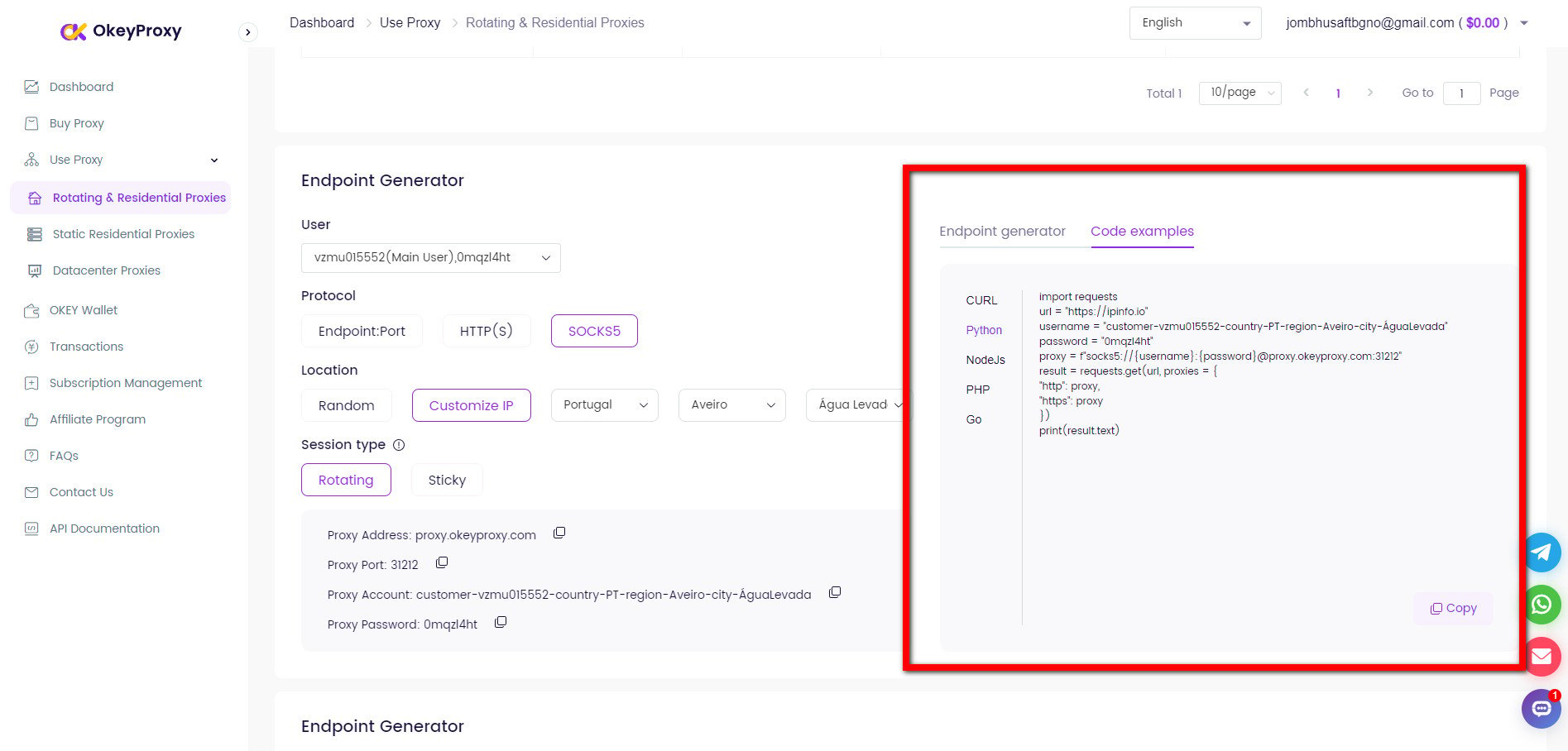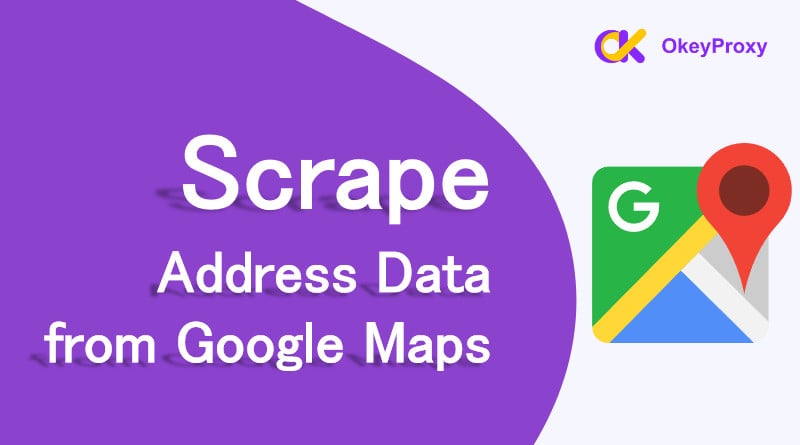A extração de dados de endereços do Google Maps é uma tarefa que interessa a muitos programadores e empresas para várias aplicações, incluindo serviços baseados na localização, estudos de mercado e muito mais. No entanto, a obtenção direta de conteúdo do Google Maps pode violar os Termos de Serviço da Google. Em vez disso, este guia explora métodos compatíveis para extrair dados de endereços do Google Maps, incluindo a utilização da API do Google Maps e abordagens alternativas.
Porquê extrair dados de endereços do Google Maps?
A recolha de dados de endereços do Google Maps oferece uma grande quantidade de informações pormenorizadas que podem ser valiosas em vários sectores.
As empresas podem utilizar estes dados para criar bases de dados abrangentes que incluam não só moradas exactas, mas também metadados associados, como nomes de empresas, números de telefone, horários de funcionamento e críticas de clientes. Este conjunto de dados enriquecido pode ser aproveitado para campanhas de marketing direcionadas, em que as empresas podem identificar locais específicos para atrair potenciais clientes ou expandir a sua presença em novas áreas.
Para as empresas de logística e de entregas, o acesso a dados de endereços actualizados permite a otimização de rotas em tempo real, reduzindo os custos de combustível e os tempos de entrega através da seleção dos caminhos mais eficientes.
No sector imobiliário, os dados de endereços recolhidos podem ser cruzados com valores de propriedade, leis de zonamento e estatísticas demográficas, dando aos investidores uma vantagem competitiva ao identificarem mercados emergentes e propriedades subvalorizadas.
Além disso, a capacidade de extrair grandes volumes de dados de endereços permite um estudo de mercado abrangente e uma análise competitiva, em que as empresas podem monitorizar a distribuição de concorrentes ou parceiros em diferentes regiões, identificando lacunas no mercado ou áreas de crescimento estratégico.
Este tipo de tomada de decisões com base em dados é essencial para as empresas que procuram manter uma vantagem competitiva no atual ambiente de negócios acelerado e sensível à localização.
É arriscado ou ilegal extrair dados do Google Maps?
A legalidade da recolha de dados do Google Maps é uma questão complexa que depende de vários factores.
-
Terms of Service:
Google Maps Termos do serviço proíbem explicitamente a recolha de dados. A API do Google Maps tem diretrizes rigorosas sobre a forma como os dados podem ser utilizados e a recolha de conteúdo fora desta API viola frequentemente esses termos. Se for detectada a prática de scraping, a Google pode bloquear os endereços IP ou tomar medidas legais.
-
Considerações legais:
-
Assegurar a conformidade com a legislação em matéria de privacidade de dados, como o RGPD ou a CCPA, ao tratar informações pessoais.
-
Respeitar os direitos de propriedade intelectual e evitar a utilização de dados extraídos de formas que possam infringir os direitos de autor ou as marcas comerciais da Google.
-
-
Jurisdictional Differences:
A posição legal sobre a recolha de dados da Web varia consoante o país. Nalgumas jurisdições, a recolha de dados públicos pode ser legal, desde que não viole termos específicos, leis de propriedade intelectual ou regulamentos de privacidade. No entanto, outros países podem ter leis mais rigorosas relativamente à recolha de dados.
-
Method of Scraping:
If scraping involves bypassing security measures, accessing private or restricted data, or causing disruption to the platform (such as DDoS-like scraping behavior), it could lead to legal actions under anti-hacking laws like the Computer Fraud and Abuse Act (CFAA) in the U.S.
-
Data Type:
A natureza dos dados que estão a ser extraídos é importante. As informações comerciais publicamente disponíveis podem ser menos sensíveis em comparação com os dados pessoais dos utilizadores. No entanto, mesmo os dados públicos extraídos em violação dos termos podem dar origem a acções judiciais.
-
Case Law:
Houve vários casos legais relacionados com a raspagem, com resultados diferentes consoante as circunstâncias. Nalguns casos, os tribunais apoiaram empresas como a Google para proteger as suas plataformas, enquanto noutros, a recolha de dados foi considerada legal, dependendo do objetivo e do método.
2 métodos para extrair dados de endereços do Google Maps
API do Google Places
A API do Google Places permite que os programadores acedam a informações sobre locais, incluindo endereços, utilizando uma abordagem estruturada e legal.
- Pesquisa de locais: Recupera uma lista de locais com base numa consulta de texto ou localização.
- Detalhes do local: Fornece informações detalhadas sobre um local específico, incluindo dados de endereço.
Como utilizar a API do Google Places para extrair dados de endereços do Google Maps:
-
Obter uma chave de API:
- Inscreva-se numa conta Google Cloud e active a API do Google Places.
- Obter uma chave API do Consola Google Cloud.
-
Efetuar pedidos de API:
pedidos de importação api_key = 'YOUR_API_KEY' place_id = 'PLACE_ID' url = f'https://maps.googleapis.com/maps/api/place/details/json?place_id={place_id}&key={api_key}' resposta = requests.get(url) dados = response.json() endereço = data['result']['formatted_address'] print(endereço)
Exemplo de caso de utilização
Listagens de empresas: Recuperar informações de endereços de empresas com base em consultas ou localizações do utilizador.
API de geocodificação do Google Maps
A API de geocodificação permite converter endereços em coordenadas geográficas e vice-versa.
- Geocodificação progressiva: Converter endereços em latitude e longitude.
- Geocodificação inversa: Converter coordenadas para um endereço legível por humanos.
Como utilizar a API de geocodificação do Google Maps para extrair dados de endereços do Google Maps:
pedidos de importação
api_key = 'YOUR_API_KEY'
endereço = '1600 Amphitheatre Parkway, Mountain View, CA'
url = f'https://maps.googleapis.com/maps/api/geocode/json?address={address}&key={api_key}'
resposta = requests.get(url)
dados = response.json()
endereço_formatado = dados['resultados'][0]['endereço_formatado']
print(endereço_formatado)
Exemplo de caso de utilização
Verificação de endereços: Validar e normalizar endereços para entradas na base de dados.
Outro método: Raspagem da Web do Google Maps (Cuidado)

Ferramentas e bibliotecas
Se optar por extrair o Google Maps diretamente (com cuidado), utilize o BeautifulSoup para analisar o HTML e ferramentas como o Selenium ou o Puppeteer para automatizar o navegador.
Exemplo de Python Selenium:
from selenium import webdriver
from bs4 import BeautifulSoup
importar time
# Configurar o Selenium WebDriver
driver = webdriver.Chrome(executable_path='/path/to/chromedriver')
driver.get('https://www.google.com/maps')
# Simular a interação do utilizador para carregar dados
caixa_de_pesquisa = driver.find_element_by_name('q')
search_box.send_keys('restaurantes em Nova Iorque')
search_box.send_keys(u'\ue007') # Premir Enter
time.sleep(5) # Aguardar que os resultados sejam carregados
# Analisar a página com BeautifulSoup
soup = BeautifulSoup(driver.page_source, 'html.parser')
endereços = soup.find_all('span', class_='A4g6ec')
for address in addresses:
print(address.text)
driver.quit()
Nota: O Google Maps pode detetar a recolha automática de dados e impedir o acesso. Utilizar um navegador sem cabeça and a proxy for scraping which could rotate IP addresses automatically such as OkeyProxy and randomizing user interactions can help mitigate detection.
Práticas de recolha de dados sobre endereços
Respeitar o ficheiro Robots.txt: Verificar e respeitar o `robots.txt` para evitar o bloqueio.
Limitação de taxa: Implemente a limitação da taxa para evitar sobrecarregar os servidores e obter IP bloqueado ou Proibição de IP.
Conformidade: Assegurar o cumprimento das normas legais e éticas.
Como rodar o IP quando os dados do Scape do Google Maps
Ao rodar eficazmente os endereços IP, pode extrair dados do Google Maps de forma mais fiável e evitar as armadilhas comuns associadas à limitação e proibição de taxas baseadas em IP.
1. Escolha um serviço de proxy: Utilize serviços de proxy residenciais ou rotativos, como o OkeyProxy, para fornecer um conjunto de endereços IP.

2. Implement Proxy Rotation:
Provedores de proxy: Utilizar serviços que rodam automaticamente os proxies.
Soluções personalizadas: Escreva código para percorrer uma lista de proxies (por exemplo, usando Python com requests e itertools.cycle).

3. Configure o seu Google Maps' Scraper:
Integre a rotação de proxy no seu script de raspagem.
Implementar o tratamento de erros para tentar novamente com diferentes proxies se um pedido falhar.
Resumo
While scrapping Google Maps data directly may seem appealing, it is essential to respect Google’s terms of service. Using Google Maps APIs provides a compliant and structured way to access address data. For developers and businesses, leveraging APIs with proxies ensures adherence to legal guidelines while offering robust functionality for retrieving location-based information.
Para obter mais informações sobre raspagem da Web e utilização de API, siga o nosso blogue e partilhe este guia com outros interessados na extração de dados da Web.











